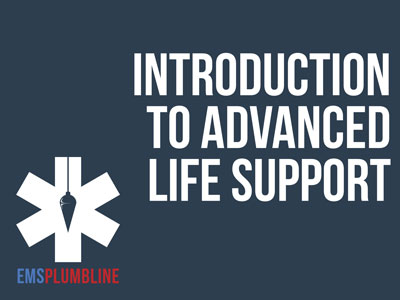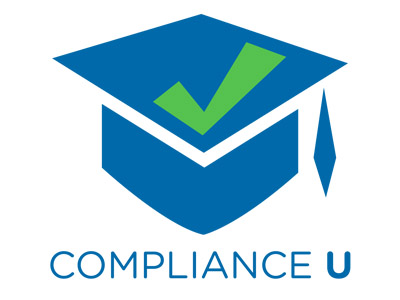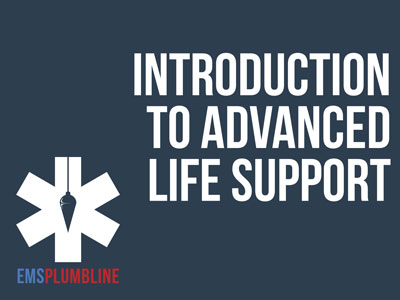 |
NYS MOLST Training |
1.50 |
The New York State Medical Orders for Life Sustaining Treatment (MOLST) form contains medical orders that EMS must honor in critically ill and frail patients. In order to honor patient wishes at the end of life, it is essential that EMS clinicians are able to rapidly interpret MOLST forms and honor the orders. In 2023, DOH policy was updated to align with an updated MOLST form and to allow the recognition of health care agents by EMS without online medical oversight. This training reviews the legal roles of health care agents, discusses the purpose of the MOLST form, how to interpret orders and reviews five scenarios that will give you the confidence to interpret and honor MOLST orders when it matters most. |
 |
Post Intubation Management |
1.00 |
The NYS Collaborative Protocol: (2-34) General: Post Intubation Management permits the insertion of placement of an orogastric (OG) tube, if equipped and regionally approved. This lesson is designed to assist with that training. Experienced EMS Educator, Paramedic Jason Haag, sits down with the distinguished and seasoned Medical Director from the Finger Lakes Region, Jack Davidoff, MD. Their instruction is the perfect support module for what you and your team can do to assure psycho-motor skills in a classroom. |
 |
Takin |
1.00 |
The odd-looking yet majestic “goat antelope” of Asia is a unique ungulate. Get to know takins in this course that investigates their natural history and conservation. |
 |
Hamadryas Baboons |
2.00 |
The only monkey species that lives in both Africa and Asia, hamadryas baboons make their homes on the faces of steep, craggy cliffs. These social monkeys fill their days with traveling, foraging, resting, and playing. Discover more in this course. |
 |
Managing Performance: Appraising Employee Performance |
1.67 |
The performance appraisal process is an integral part of performance management. It consists of two phases that must be carefully planned and executed: establish a performance plan and complete the performance appraisal process.
In this course you will learn to: understand the performance appraisal process, identify and gather appraisal material, prepare for an appraisal discussion, lead employees in an appraisal discussion, and respond to defensive employees and resolve conflict in an appraisal discussion. |
 |
Planning for Emergencies |
0.50 |
The Preparing for Emergencies: Strategies for Small Business course is designed to help participants identify a learning goal and expectation for their own business. Throughout this course, participants will assess their own business readiness plans for emergencies, learn about the four steps in the emergency planning process, and learn about emergency management considerations.
|
 |
Planning for Emergencies (Corrections) |
0.50 |
The Preparing for Emergencies: Strategies for Small Business course is designed to help participants identify a learning goal and expectation for their own business. Throughout this course, participants will assess their own business readiness plans for emergencies, learn about the four steps in the emergency planning process, and learn about emergency management considerations.
|
 |
Preventing Slips, Trips and Falls: A Training Program for Small Business (Corrections) |
0.67 |
The Preventing Slips, Trips and Falls course focuses on helping small business owners and their employees identify, evaluate and control the hazards in their workplaces that may cause slips, trips and falls. Designed to increase and improve participants' knowledge, skills and access to valuable resources, this course will assist them in establishing systems that can help them prevent slips, trips and falls. Participants will learn how to prevent, recognize, evaluate, and control slip, trip and fall hazards, as well as develop their own learning goals and action plans. |
 |
Preventing Slips, Trips and Falls: A Training Program for Small Business |
0.67 |
The Preventing Slips, Trips and Falls course focuses on helping small business owners and their employees identify, evaluate and control the hazards in their workplaces that may cause slips, trips and falls. Designed to increase and improve participants' knowledge, skills and access to valuable resources, this course will assist them in establishing systems that can help them prevent slips, trips and falls. Participants will learn how to prevent, recognize, evaluate, and control slip, trip and fall hazards, as well as develop their own learning goals and action plans. |
 |
2019 Collaborative Advanced Life Support Adult and Pediatric Treatment Protocols |
3.00 |
The protocol changes that are listed in this lesson were developed by a committee of your ALS peers and Medical Directors from around NYS. A great deal of thought went into this project, and we would like to give you a little insight into how we came to this point. Dr. Jeremy Cushman has been involved in drafting EMS protocols for nearly two decades. His experience with the NYS Collaborative Protocol Projects will certainly lead to discussion within your coworkers.
Final Exam: These ten questions are NOT meant to summarize the entire set of protocols. Please take your time and answer carefully. These questions will spark further discussion and lead to improved care within your region. An 80% or higher is required to obtain a passing score. You have two attempts to gain this score. |











